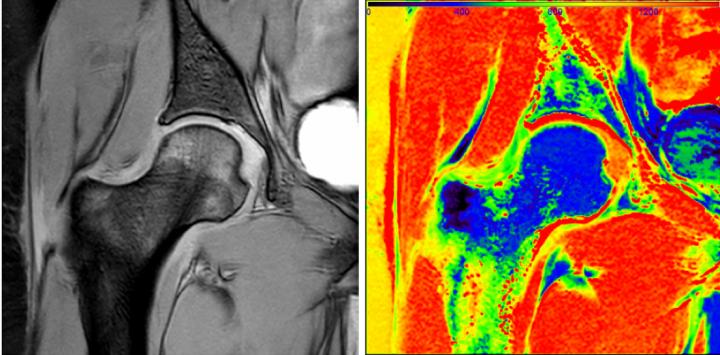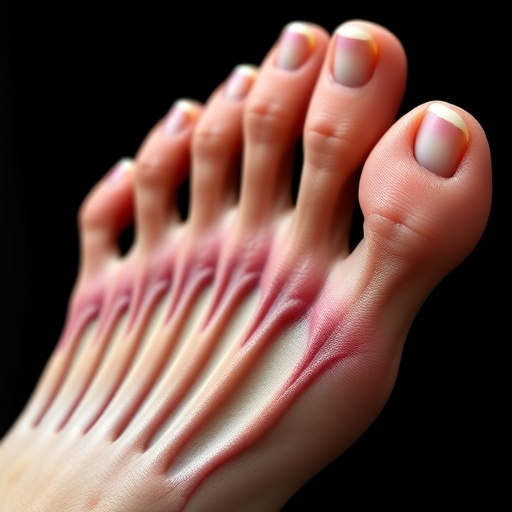
Credit: TACC, UTHRC, Philips Healthcare
One of the main tools doctors use to detect diseases and injuries in cases ranging from multiple sclerosis to broken bones is magnetic resonance imaging (MRI). However, the results of an MRI scan take hours or days to interpret and analyze. This means that if a more detailed investigation is needed, or there is a problem with the scan, the patient needs to return for a follow-up.
A new, supercomputing-powered, real-time analysis system may change that.
Researchers from the Texas Advanced Computing Center (TACC), The University of Texas Health Science Center (UTHSC) and Philips Healthcare, have developed a new, automated platform capable of returning in-depth analyses of MRI scans in minutes, thereby minimizing patient callbacks, saving millions of dollars annually, and advancing precision medicine.
The team presented a proof-of-concept demonstration of the platform at the International Conference on Biomedical and Health Informatics this week in Orlando, Florida.
The platform they developed combines the imaging capabilities of the Philips MRI scanner with the processing power of the Stampede supercomputer — one of the fastest in the world — using the TACC-developed Agave API Platform infrastructure to facilitate communication, data transfer, and job control between the two.
An API, or Application Program Interface, is a set of protocols and tools that specify how software components should interact. Agave manages the execution of the computing jobs and handles the flow of data from site to site. It has been used for a range of problems, from plant genomics to molecular simulations, and allows researchers to access cyberinfrastructure resources like Stampede via the web.
"The Agave Platform brings the power of high-performance computing into the clinic," said William (Joe) Allen, a life science researcher for TACC and lead author on the paper. "This gives radiologists and other clinical staff the means to provide real-time quality control, precision medicine, and overall better care to the patient."
For their demonstration project, staff at UTHSC performed MRI scans on a patient with a cartilage disorder to assess the state of the disease. Data from the MRI was passed through a proxy server to Stampede where it ran the GRAPE (GRAphical Pipelines Environment) analysis tool. Created by researchers at UTHSC, GRAPE characterizes the scanned tissue and returns pertinent information that can be used to do adaptive scanning – essentially telling a clinician to look more closely at a region of interest, thus accelerating the discovery of pathologies.
The researchers demonstrated the system's effectiveness using a T1 mapping process, which converts raw data to useful imagery. The transformation involves computationally-intensive data analyses and is therefore a reasonable demonstration of a typical workflow for real-time, quantitative MRI.
A full circuit, from MRI scan to supercomputer and back, took approximately five minutes to complete and was accomplished without any additional inputs or interventions. The system is designed to alert the scanner operator to redo a corrupted scan if the patient moves, or initiate additional scans as needed, while adding only minimal time to the overall scanning process.
"We are very excited by this fruitful collaboration with TACC," said Refaat Gabr, an assistant professor of Diagnostic and Interventional Imaging at UTHSC and the lead researcher on the project. "By integrating the computational power of TACC, we plan to build a completely adaptive scan environment to study multiple sclerosis and other diseases."
Ponnada Narayana, Gabr's co-principal investigator and the director of Magnetic Resonance Research at The University of Texas Medical School at Houston, elaborated.
"Another potential of this technology is the extraction of quantitative, information-based texture analysis of MRI," he said. "There are a few thousand textures that can be quantified on MRI. These textures can be combined using appropriate mathematical models for radiomics. Combining radiomics with genetic profiles, referred to as radiogenomics, has the potential to predict outcomes in a number diseases, including cancer, and is a cornerstone of precision medicine."
According to Allen, "science as a service" platforms like Agave will enable doctors to capture many kinds of biomedical data in real time and turn them into actionable insights.
"Here, we demonstrated this is possible for MRI. But this same idea could be extended to virtually any medical device that gathers patient data," he said. "In a world of big health data and an almost limitless capacity to compute, there is little reason not to leverage high-performance computing resources in the clinic."
###
The research is supported in part by National Science Foundation (NSF) award ACI-1450459, by the Clinical Translational Science Award (CTSA) Grant UL1-TR000371 from the National Institutes of Health (NIH) National Center for Advancing Translational Sciences, and by the Chair in Biomedical Engineering Endowment Fund. Stampede was generously funded by the NSF through award ACI-1134872.
Media Contact
Aaron Dubrow
[email protected]
512-471-8217
@TACC
http://www.tacc.utexas.edu/
############
Story Source: Materials provided by Scienmag





